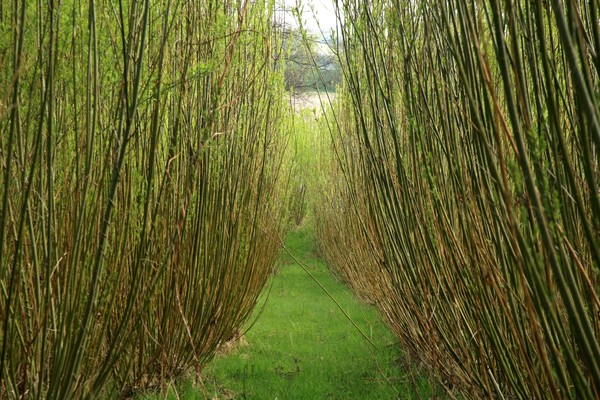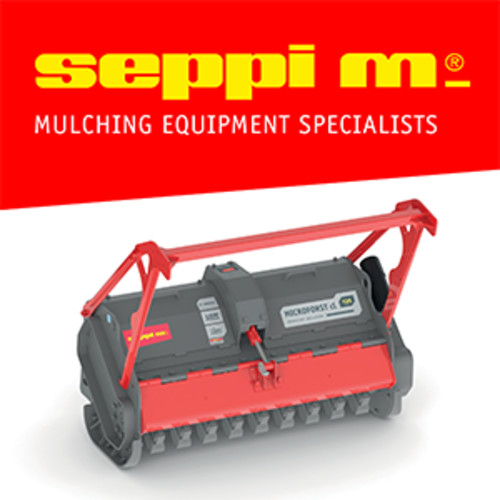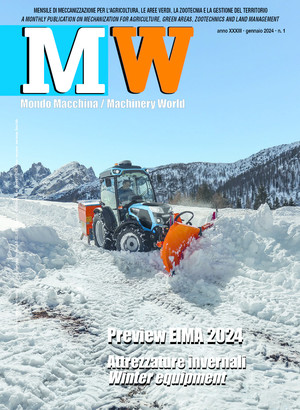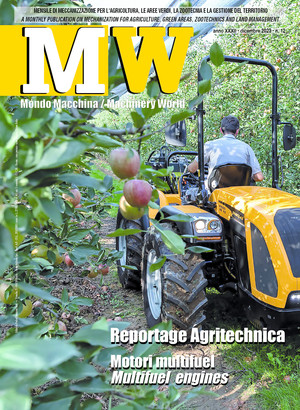
Wood chips from Short Rotation Forestry with low mechanisation intensity
For smaller surface areas, the use of a less intensive mechanisation of the key operations of the cultivation cycle, such as harvesting and uprooting with stump grinding, can be a versatile and rational solution. The positive experiences already gained in this setting in central and northern Europe are very encouraging
The production of woody biomass has recently become widespread in some Italian regions, especially regarding poplar. Thanks to some specific measures of the RDPs of Lombardy and Veneto, in recent years the area allocated to this cultivation has reached and then stabilised at a few thousand hectares. Within the scope of fast-growing woody crops (the so-called Short Rotation Forestry, SRF), compared to other species such as willow, the poplar option is essentially linked to a greater knowledge of cultivation techniques on the part of farmers. In truth, in terms of production and ease of cultivation, there is no reason to favour poplar over willow. Proof of this is that in the rest of Europe, especially in the centre-north, it is in fact willow that is the most cultivated species.
In any case, the key points of the cultivation technique are always the same, i.e. the length of the cultivation cycle (the period between the planting and removal of the crop), the coppicing rotation (the interval between two coppices), the planting density and the mechanisation of field work.
Mechanisation and economic sustainability of the supply chain are the critical issues that have most limited the spread of these crops. At present, some phases of the cultivation cycle (e.g. planting and harvesting) require dedicated implements, which are not usually available in the machinery fleet of farms in the areas where SRF have spread. While equipment commonly used for arable crops can be profitably adopted for all the other cultivation treatments, specific transplanters are needed for planting, while for coppicing one must use mowers with a special cutting head or even forestry-derived machines.
The possibility of 'simplifying' the mechanisation of these specific processes, by resorting to smaller machines, could favour SRF even where the available surface area is modest, and therefore such as not to justify the use of large vehicles (whether owned by the farmer or by the contractor). Unlike other central-northern European countries, where the adoption of partial mechanisation is more frequent, such a solution is still rarely adopted in Italy. Conversely, a similar option has been successfully applied in Romania on willow SRF cultivations with cutting cycles of 2 and 3 years.
Cultivation technique
The willow clones were planted in 2011, with both two-year and three-year coppicing. The cultivation cycle included both work inherent to the year of planting or soil restoration and activities carried out cyclically and repeated during each rotation. Planting requires a routine similar to that performed for the preparation of a classic seed bed, i.e. a primary tillage of the soil, with ploughing to a depth of 35 cm and crumbling the tilled layer by harrowing. The aim is to promote optimal adhesion of the soil to the cuttings, so as to reduce failures due to dehydration of the planting material. By means of a transplanter equipped with two furrow openers at the front, the cuttings (18-20 cm long and 20 mm in diameter) are manually placed in a vertical position and immediately buried with a pair of furrow-closing wheels. At the end of the year of planting, the training cut is performed: the young shoots are cut off with a brush cutter, to stimulate the production of new, more numerous and vigorous suckers. Fertilisation involves the distribution of urea, in each year of the rotation, after coppicing and weeding. Considering the climatic characteristics of the cultivation area and the current absence of specific pathogens and parasites, cultivation does not involve irrigation or pesticide treatments. Harvesting is partially mechanised, carried out by pairs of operators: the first cuts the branches with a brush cutter, while the second directs their fall to the ground on one side, then manually accumulates the material to feed a chipper driven by the tractor, which throws the chopped product into a trailer, for subsequent transport to the farm's storage site. An alternative solution involves grouping the cut suckers into small bundles, loading them onto a trailer for transport to the storage site, where they are subsequently chipped. This alternative method has the advantage that the material is chopped after partial drying - so it is less prone to fermentation and fungal attack - but on the other hand it requires more labour, leading to higher production costs.
At the end of the final coppicing, which is usually scheduled in the 12th year, the cultivation is explanted, with the remaining stumps chopped up using a forestry grinder. However, the duration of the cultivation cycle may vary; in fact, excessively long cycles may lose their profitability due to a progressive death of the stumps, leading to a decrease in yield. Although both the two-year and three-year cycles are characterised by low energy demand, the one with the longest rotation requires less fertiliser and fewer cuttings, since the planting is less dense. In fact, the yields are similar, at about 100 m3 /ha per year, although the shorter rotation produces lower quality wood chips, due to the smaller diameter of the cut suckers, and thus a higher ash content. Conversely, the longer rotation cycle would make it impossible to use brush cutters for harvesting, due to the larger size of the plants. In this regard, experiences in northern European countries have confirmed that for three-year willow plantations in particularly fertile soils and/or in the case of four-year coppices, harvesting must necessarily be carried out with chainsaws, thus entailing a significant economic burden.
Mechanisation intensity
Apart from the preparation of the soil for planting and the removal of stumps, all the remaining work in the cultivation cycle described requires tractors of modest power (e.g. driving small-scale chippers), and manually operated equipment (e.g. brush cutters). This entails relatively modest and feasible economic investments for an individual producer, who thus no longer has to depend on the contractor for harvesting with a forage harvester, for example.
Energy balance
Since biomass is cultivated for energy production through thermochemical processes (combustion, gasification or pyrolysis), a first indicator of the sustainability of the supply chain is undoubtedly the energy balance. Using the Cumulative Energy Demand (CED, also called 'primary energy consumption') method, it is possible to calculate the direct and indirect energy required to produce a commodity, i.e. wood chips in this case. In the case of the two-year SRF, the CED is 114 MJ/m3, while for the three-year SRF this value is slightly lower, at 110 MJ/m3 . Considering an average bulk density of 300 kg/m3 , a moisture content at harvest of 45-50% and a lower calorific value of 18.5 MJ/kg, the energy output varies between 2400 and 2700 MJ/m3 . Taking only the field phase of the chain into consideration, the energy balance is therefore strongly positive, i.e. the output is 21-24 times greater than the input. Considering the current critical energy situation, it is not unreasonable to assume that in the near future, interest in some agro-energy supply chains that have lost appeal in recent years to the advantage of others may grow again. As far as SRF is concerned, the possibility of resorting to less demanding solutions in terms of mechanisation and related investments could facilitate the spread of these biomass crops even in marginal areas, especially where large areas are not available.








